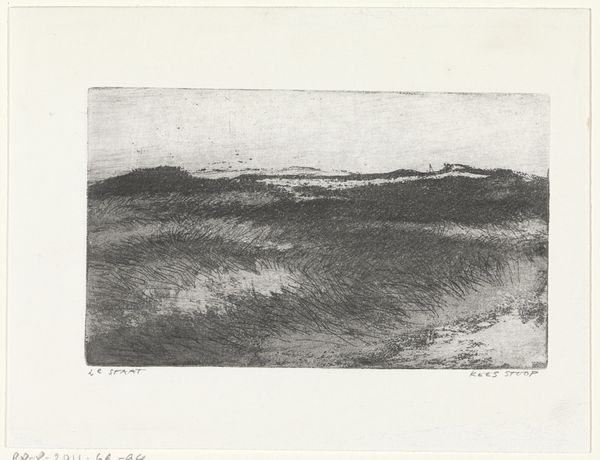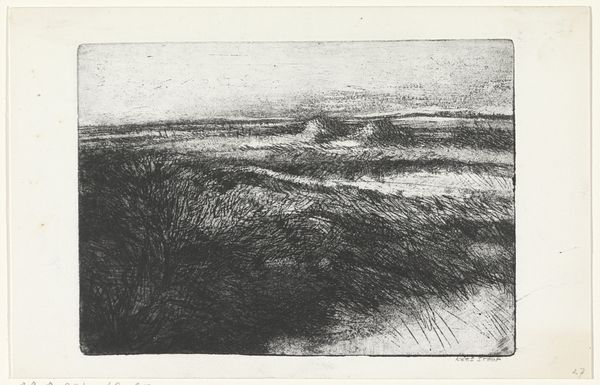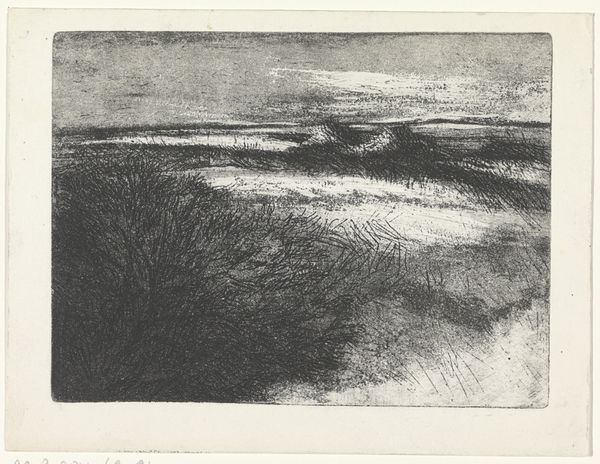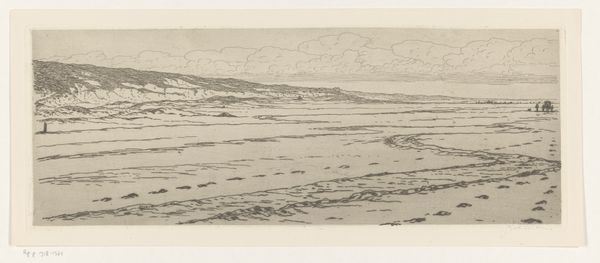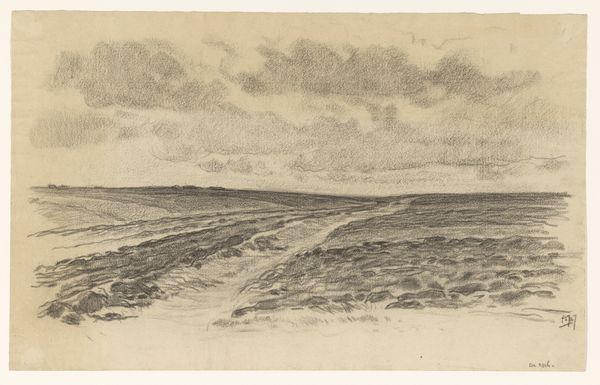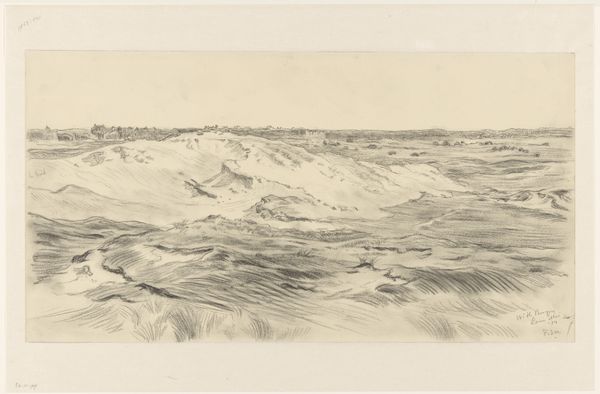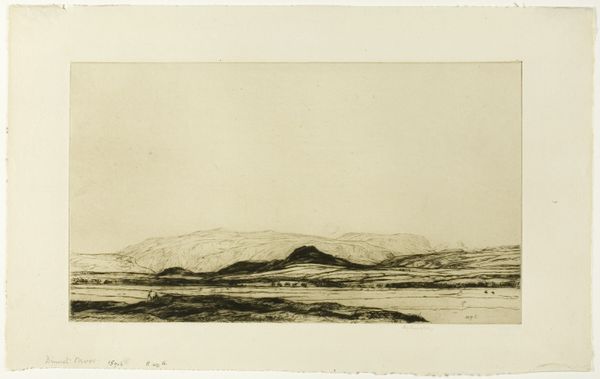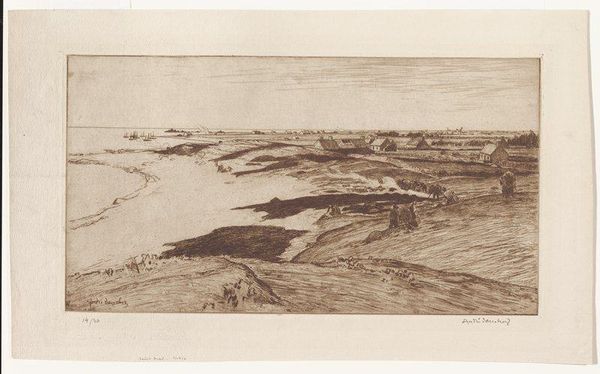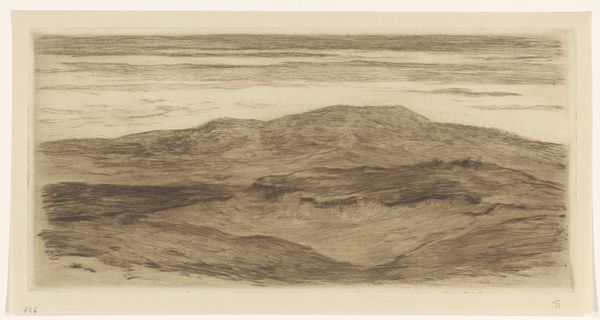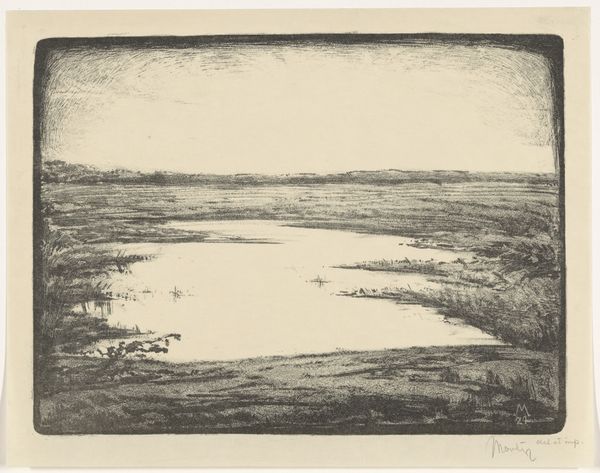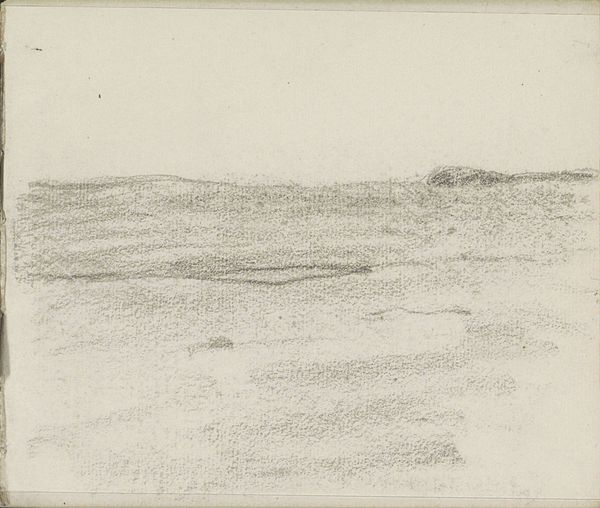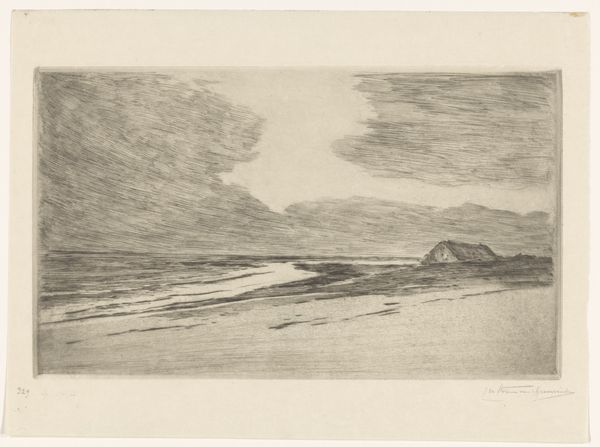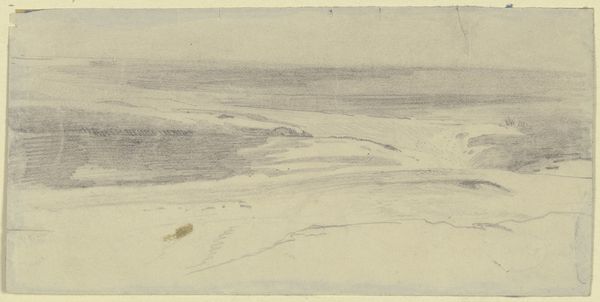
print, etching
# print
#
etching
#
landscape
#
line
#
realism
Dimensions: height 170 mm, width 250 mm, height 152 mm, width 232 mm
Copyright: Rijks Museum: Open Domain
Curator: This is "Duinlandschap," or "Dune Landscape," an etching by Kees Stoop created between 1975 and 1976. It resides here at the Rijksmuseum. Editor: There’s something haunting about this image. The monochrome palette and dense linework create a very heavy, almost oppressive atmosphere. The ground seems to vibrate with an energy barely contained. Curator: The restrained palette certainly amplifies the effect. Stoop's reliance on line—notice how nearly everything is conveyed through etching—creates a rich visual texture. Semiotically, we could read the densely packed lines as emblematic of nature's uncontrollable forces. Editor: I am intrigued by this emphasis on the uncontrollable. During this time in the Netherlands, there was increasing conversation around land use, industrial expansion, and the tension with protecting natural landscapes. Was Stoop participating in this dialogue? Curator: Undoubtedly. Art cannot exist in a vacuum. Stoop was very active in artists' collectives which focused specifically on representing the Dutch landscape as part of the nation’s identity at a moment of great political debate concerning resources. Editor: Considering the print’s materiality and dissemination – its ready availability through the market – it seems likely this work engaged a broader public audience. Did Stoop exhibit these works within community spaces as well? Curator: Historical records show his landscapes often featured in municipal buildings, furthering the engagement beyond typical art institutions. The placement aimed to ensure wider visibility of his representations of a cherished environment facing significant transformations. Editor: It is remarkable how Stoop achieves such depth of feeling with minimal tonal range. Looking closely, one appreciates how the varying directions of the etched lines create shadow, volume and suggest the movement of the grasses in the wind. Curator: It shows us, again, how fundamental artistic decisions regarding structure influence not only the technical realization but also shape meaning and contribute to powerful readings by different publics and viewers. Editor: Absolutely. By understanding these political implications behind artistic intent and formal rendering, our understanding evolves from aesthetic evaluation to comprehending larger cultural dialogues and political considerations embedded within art history.
Comments
No comments
Be the first to comment and join the conversation on the ultimate creative platform.
